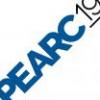An Ohio Supercomputer Center (OSC) staff member will be serving as a mentor to a colleague from Wofford College as they work to boost a federal program aimed at expanding a capable and innovative advanced digital resource workforce across the country.
Press Releases
Primary tabs
A paper authored by staff members of the Ohio Supercomputer Center (OSC) earned best paper honors in the Facilitation of Advanced Research Computing track at the Practice & Experience in Advanced Research Computing Conference (PEARC), being held July 28–Aug. 1 in Chicago.
Ohio Supercomputer Center staff members will be attending and presenting at the PEARC19 conference, July 28 – Aug. 1 in Chicago.
A dozen Ohio middle-school girls are spending part of their summer at the Ohio Supercomputer Center’s (OSC) 19th annual Young Women’s Summer Institute (YWSI), July 14-20 at The Ohio State University.
YWSI participants investigate complex science problems while discovering career opportunities in the science, technology, engineering, and mathematics (STEM) fields.
Eighteen Ohio high school students will be spending two weeks this summer at the Ohio Supercomputer Center’s 30th annual Summer Institute, June 16-28 at The Ohio State University. The students will investigate complex science and engineering problems while discovering career opportunities in the fields of science, technology, engineering and mathematics (STEM).
The National Science Foundation (NSF) recently awarded funding to a team led by the Ohio Supercomputer Center (OSC) for further development of Open OnDemand, an open-source software platform supporting web-based access to high performance computing (HPC) services. The project team consists of representatives from OSC, the University at Buffalo and Virginia Tech.
Ohio Supercomputer Center engineers and Dell EMC specialists are testing and preparing to deploy the center’s newest, most efficient supercomputer system, the liquid-cooled, Dell EMC-built Pitzer Cluster.
An NSF-funded pilot program led by the Ohio Supercomputer Center (OSC) seeks to grow the country’s research workforce with individuals trained in computational and data science, particularly through curriculum taught at institutions faced with resource limitations and focused on minority inclusion.
Exciting innovations and new research frontiers are breaking through every day in Ohio, and attendees of the fall Statewide Users Group Conference at the Ohio Supercomputer Center on Thursday got a preview of some innovations to come.
SUG is a volunteer group composed of the Ohio university faculty who provide OSC’s leadership with program and policy advice and direction to ensure a productive environment for research.







